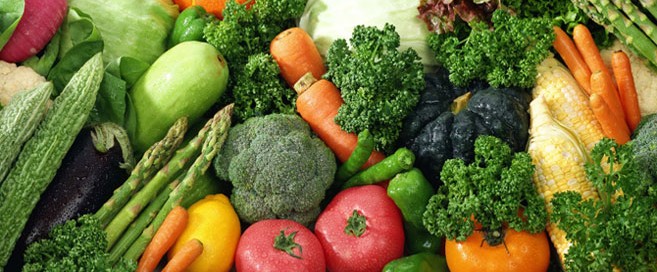You arrive home, proud of your recent fresh vegetable and fruit purchase. You’re stocked up for the week…well so you think. You go to grab that broccoli 3 days later, only to find it has lost all crispness and tastes bland, not to mention the reduction in nutrient content! What a waste 🙁
Want to get the most out of your shop by keeping your vegetable purchases as fresh as possible, but also considering your health as well?
Here is how it’s done…
Use no longer: Alum. Foil, Plastic Wrap, Minimize plastic container use
Note: If plastic wrap is required, place a brown paper bag between the food and the plastic
Replace with:
Glass containers.
Ceramic containers, bowls.
Stainless steel containers and bowls.
Brown paper bags.
Tea towels.
Washing your produce:
Always wash your vegetables before preparing. You can do this just after you purchase (for those stored in the fridge), and therefore allow drying before you put away. If they are left wet, this will encourage growth of mould. Otherwise wash produce just before preparation.
Vegetable scrubbers are a good idea, especially if you cannot source organic produce. You can pick these up from fruit and vegetable shops, as well as health food stores.
Wash, dry (in a spinner is best) and wrap in a damp tea towel:
Leafy vegetables (lettuce varieties, spinach, kale).
Then you should store in a glass container, in the ‘crisper’ section of the fridge.
Plan to eat these within 3 days.
Keep lettuce well away from melons, apples or pears, to avoid any browning of the leaves.
Keep these ones upright, in shallow water (such as a cup), and covered if possible:
Asparagus
Keep these on the counter:
Tomatoes. If needed, you can refrigerate, however much of the flavour will be lost.
Keep these in a dark, cool spot (pantry):
Garlic
Onions
Potato
Shallots
Sweet potato
Winter squash (butternut, acorn, spaghetti squash). Once cut, refrigerate in an airtight container.
Keep these ones towards the front of your fridge, in an airtight container:
Peas
Keep these ones in the bottom ‘crisper’ section, where the fridge has its highest humidity:
Artichokes
Beetroot
Broccoli
Cabbage
Carrots (store in a separate glass airtight container within this section of the fridge).
Cauliflower
Capsicum (store in a separate glass container for optimal freshness).
Celery (store in a separate glass airtight container within this section of the fridge).
Chilli
Cucumber
Eggplant
Fresh herbs
Green beans (store in a separate brown paper bag within this section of the fridge).
Leeks
Lettuce
Mushroom
Radish
Scallions
Summer squash
Turnip
Zucchini
Other storage tips:
1. Store apples in a brown bag/ glass container and away from other strongly scented fruits and vegetables.
2. Ripen bananas on your kitchen counter and then transfer to the fridge. You will notice the skin will continue to ripen (turning black), however the fruit itself will only slightly further ripen. If you need to speed up the ripening phase, put your bananas in a brown paper bag and store in a warm place.
3. Remove any spoiled grapes before storing in the fridge and/ or freezer.
4. Ripen kiwis (if required) in a brown bag with banana, apple or pear and then place in the fridge, away from other fruits.
5. To ripen mango quickly, place them in a brown paper bag, with another mango, banana, or pear, in a cool temperature. Otherwise leave in a cool temperature and transfer to the fridge once softened.
6. Do not remove the seeds of any cut melon, to ensure it remains moist and store in an airtight container in the fridge.
7. Oranges do best in cool temperatures out of the fridge if consumed within 3 days, otherwise for longer when stored in a brown paper bag and in the fridge.
8. Pears will ripen quickly when placed in a brown bag with ripe bananas, and best transferred to the fridge once ripe.
9. Store strawberries in the fridge straight away. The best way is to place them on a tea towel, in layers and in an airtight container. They need to be well washed before eating and eaten within 3 days. They also freeze well.
To Freeze Fruit:
Place the whole/ cut up fruit in a stainless steel bowl, and cover with a tea towel.
So there you have it, some simple tips to optimise the freshness of your next vegetable shop.
About the Author:
Kasey Willson is a qualified naturopath who is passionate about helping people reach and maintain their health and happiness potential. She runs a busy Naturopath clinic based in Adelaide, South Australia, with patients in the hundreds who are successfully working towards their health goals with her support.
Author of: Healthy Habits To Dining Out
Your Journey To Health and Happiness
Twitter: (https://twitter.com/KaseyWillsonND)
Facebook: (https://www.facebook.com/KaseyWillsonND)
Website: (www.myhealthmyhappiness.com.au)






